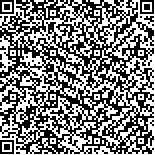本文已被:浏览 671次 下载 377次
Received:April 26, 2022 Published Online:October 20, 2022
Received:April 26, 2022 Published Online:October 20, 2022
中文摘要: 目的 研究基于罗哌卡因的超声引导下前锯肌平面阻滞(SAPB)和竖脊肌平面阻滞(ESPB)在肺癌患者围术期镇痛效果的差异。
方法 选取2018年3月至12月常州市第一人民医院接受胸腔镜手术的72例患者,随机分为三组:单纯患者静脉自控镇痛(PCIA)组(P组);PCIA+SAPB组(S组);PCIA+ESPB组(E组),每组24例。S组和E组入室后分别在超声引导下以0.375%罗哌卡因0.4 ml/kg进行SAPB和ESPB。记录术中舒芬太尼的消耗量。记录患者于复苏室、术后6、12、24、48 h静息和运动时的视觉模拟评分(VAS),评估三种方案的临床疗效;记录术后48 h内镇痛补救及恶心呕吐等不良反应发生情况。
结果 最终P、S、E组分别有24、23和19例完成研究。S组和E组术中舒芬太尼消耗显著低于P组(P<0.05)。术后三组各时间点静息VAS评分差异均无统计学意义(P>0.05); S组、E组在多个时间点运动VAS评分均显著低于P组(P<0.05)。随时间延长,三组运动VAS评分呈显著升高趋势,P组、S组、E组每6 h回归系数分别为0.39、0.22和0.39(P<0.01);组间比较发现,S组比P组每6 h运动VAS评分低0.07(P=0.022)。S组镇痛补救发生率显著低于P组(8.7% vs 37.5%, P=0.020);三组恶心呕吐发生率差异无统计学意义(P>0.05)。
结论 基于罗哌卡因的SAPB和ESPB联合PCIA,均可为胸腔镜肺癌手术患者提供有效的术后镇痛,其中SAPB在控制术后运动痛方面更有优势。
Abstract:ObjectiveTo investigate and compare the postoperative anesthesia effects of ultrasound-guided serratus anterior plane block(SAPB) and erector spinae plane block(ESPB) with ropivacaine in lung cancer patients undergoing thoracoscopic lobectomy.
Methods Seventy two patients undergoing thoracoscopic surgery in Changzhou First Peoples Hospital from March to December 2018 were randomly divided into patient-controlled intravenous analgesia(PCIA) group(P group),PCIA plus SAPB group(S Group) and PCIA plus ESPB group(E Group) according to analgesia method(n=24). The patients in S group and E group received 0.4 ml/kg of 0.375% ropivacaine under the guidance of ultrasound before surgery, and the intraoperative ropivacaine consumption was recorded. The visual analog scale(VAS) pain scores at rest and during activities were observed at postanesthesia care unit(PACU) stay, 6-, 12-, 24-and 48-hour after operation to evaluate the clinical efficacy of the three schemes. The incidence of rescue analgesia and post-operative nausea and vomiting were recorded within 48 hours after surgeries.
Results There were 24, 23 and 19 cases completing the study, respectively in P group, S group and E group. Sufentanil consumption in S group and E group were significantly lower than that in group P(P<0.05). There was no significant difference in resting VAS scores at all time points among three groups(P>0.05). The VAS scores during activities in S group and E group were significantly lower than those in P group at multiple time points(P<0.05). With the prolongation of time, the VAS during activities in three groups showed a marked upward trend, and the regression coefficients were 0.39, 0.22, and 0.39, respectively every 6 hours(P<0.01). VAS during activities in S group was lower than that in P group(by 0.07) every 6 h(P=0.022). The incidence of rescue analgesia in S group was significantly lower than that in P group(8.7% vs 37.5%, P=0.020).There was no significant difference in the incidence of post-operative nausea and vomiting among three groups(P>0.05).
Conclusion Both ultrasound-guided SAPB and ESPB with ropivacaine can provide adequate analgesia for lung cancer patients after undergoing thoracoscopy lobectomy, and SAPB is more advantageous in controlling postoperative motion pain.
keywords: Perioperative analgesia Ultrasound guidance Ropivacaine Serratus anterior plane block Erector spinae plane block Thoracoscopic surgery
文章编号: 中图分类号:R614 文献标志码:A
基金项目:常州市科学技术局应用基础研究计划项目(CJ20220098)
| Author Name | Affiliation |
| MAO Gu*, QIU Lan | *Department of Anesthesiology, The Fourth Affiliated Hospital of Nanjing Medical University, Nanjing, Jiangsu 210031, China |
| 仇澜2 | 2. 常州市第一人民医院麻醉科, 江苏 常州 213003 |
| Author Name | Affiliation |
| MAO Gu*, QIU Lan | *Department of Anesthesiology, The Fourth Affiliated Hospital of Nanjing Medical University, Nanjing, Jiangsu 210031, China |
| 仇澜2 | 2. 常州市第一人民医院麻醉科, 江苏 常州 213003 |
引用文本:
